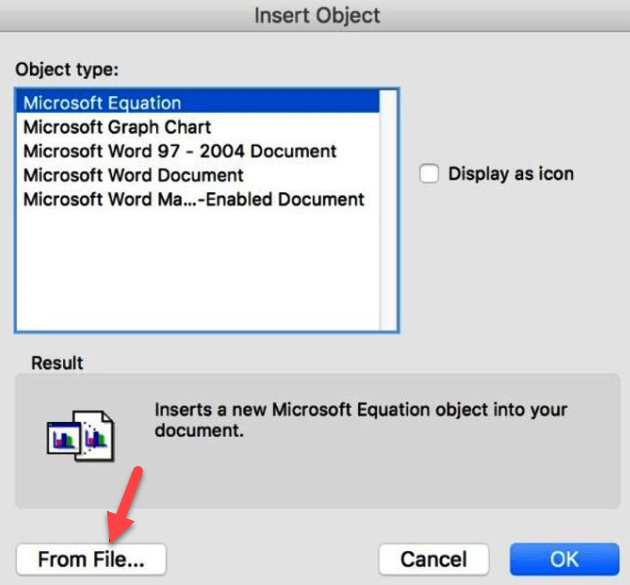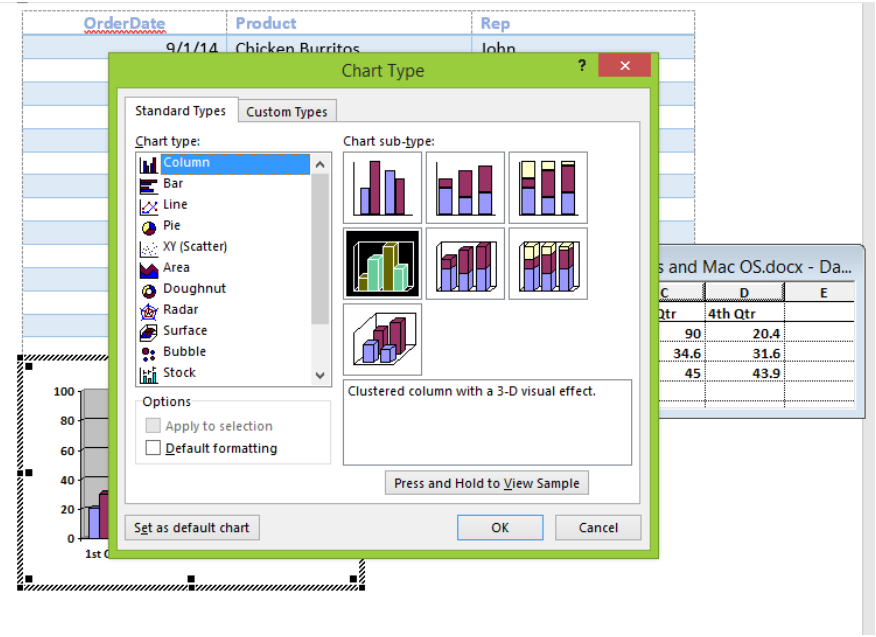

Tdm.matrix <- tdm.matrix %*% t(tdm.matrix)īut it's not what I really need, since I have to build a data frame suitable to be loaded in a network analysis tool like Gephi. We will use a bar graph for this example, although the steps are the same for. I can convert to a term-term matrix using this snippet of code: library("tm") Excel doesn’t have this setting and doesn’t need it.I've a term-document sparse matrix made iusing the tm package in R
#Convert table to graph in word for mac windows
Alternatively, you can use Ctrl+C for Windows or Cmd+C. Right-click anywhere on the table and select copy.

Select the entire table by moving the cursor on top of it and tapping the four-fold arrow button. Typically, older versions of Microsoft Word allowed us to right-click on any table and convert. The section will have the same ruler units setting as Word does. The major problem with this method is that you cannot edit the table once you convert it to an image. We may also create a chart from our normal table Data in MS-Word. For example, if you open PowerPoint’s options (File>Options), and go to the Advanced tab, you will find a Display section. If you need to change the ruler units for other apps e.g., PowerPoint, you can do so in much the same way. The changes you make in Microsoft Word will not change the ruler units used in other apps of the Office productivity suite. I dont see a way to select a single column, or I could potentially copy the table a column at a time (it only has about 13 columns). That brings up the Object dialog, which all. In Word, select Insert tab > Text section > Object dropdown > Object. You can change the units any time you need to and doing so frequently will not damage the document. Ive tried selecting the table in the document, copying it, and pasting into a new spreadsheet, but this results in a one-column spreadsheet with all of the columns flattened into one. But if you have both Word and Excel installed, you can embed an Excel spreadsheet in a Word doc, and that embedded spreadsheet can have a pivot table.

This works with all the newer versions of Microsoft Word, and it takes just a few steps.
#Convert table to graph in word for mac pdf
Additionally, if the document was converted using other apps or services, like Google Docs, the alignment may be upset but again the ruler and the units it uses will not be to blame. One of the easiest ways to convert a table from a PDF to a Word document is to simply open the PDF in Word. The alignment is only upset if the system that a document is being viewed on has set up defaults that override the document’s own formatting. (In Word 2003, choose Convert from the Table menu and then select Text To Table.) Word does a good job of assuming the table setup based on the. This change will impact all documents that you open in Microsoft Word however, when you share a document, and someone opens it using the same app, the ruler will show up in the units they prefer.Īgain, this will not impact the alignment of items in the document. Choose Convert Text To Table from the dropdown list. It will reflect the new units that you’ve selected.Ĭhanging the ruler units will not upset the alignment of the different objects that you’ve already set in the document. Go to the View tab, and select the Ruler checkbox to show the ruler in your document. Once you’ve selected the units, click Ok and return to the main Microsoft Word interface.

You can choose inches, centimeters, millimeters, points, and picas. In this section, open the dropdown next to ‘Show measurements in units of’, and select the units you want the ruler to measure in. Go to the Advanced tab, and scroll down to the Display section. This will open the Microsoft Word options window. Open Microsoft Word, and go to File>Options. Click the Image Quality pop-up menu, then choose an. Specify export settings: PDF: These files can be opened and sometimes edited with applications like Preview and Adobe Acrobat. Open the document, then choose File > Export To > file format (from the File menu at the top of your screen). The ruler units help not just with aligning different elements in a document, and managing the width and height of cells, columns, and rows in tables. Save a copy of a Pages document in another format. The ruler, by default, is scaled in inches however, if you’re not comfortable working with inches, you can change the ruler units in Microsoft Word. It doesn’t have a snapping feature like PowerPoint does however there is a ruler that allows you to align items. You can add graphs, tables, images, and text boxes to a document in Microsoft Word.


 0 kommentar(er)
0 kommentar(er)
